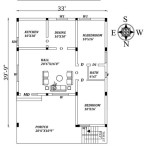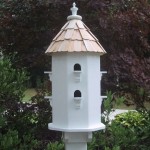Outdoor Cat House Plans for Winter
Winter presents unique challenges for outdoor cats. Exposure to freezing temperatures, wind, and precipitation can threaten their health and well-being. Providing a well-insulated and weatherproof outdoor cat house can significantly improve their survival chances and comfort during harsh weather conditions. Careful planning and construction are crucial for creating an effective winter shelter.
Several factors contribute to an effective winter cat house design. Size is a primary consideration. The structure should be large enough for a cat to comfortably turn around and lie down but small enough to retain body heat. A good rule of thumb is to make the interior space approximately one and a half times the size of the cat. Multiple cats may require a larger shelter, but individual, smaller houses are often preferred to prevent territorial disputes and ensure each cat has a secure retreat.
Insulation is paramount for retaining heat and protecting against the cold. Various materials offer suitable insulation properties, including straw, hay, and rigid foam insulation boards. Straw and hay provide natural insulation and allow for adequate ventilation. However, they can become damp and harbor parasites, requiring regular replacement. Rigid foam insulation boards, while more expensive, offer superior insulation and are more resistant to moisture. Placing the insulation within the walls and on the floor of the cat house maximizes its effectiveness.
Elevating the cat house off the ground prevents moisture from seeping into the structure and provides additional insulation from the cold ground. A simple platform built from pressure-treated lumber or concrete blocks can effectively raise the shelter several inches. Placing the house on a slightly sloped surface facilitates water runoff and prevents pooling around the base.
The entrance to the cat house should be small enough to minimize drafts and heat loss. A flexible flap made from heavy-duty plastic or rubber can further reduce drafts and prevent precipitation from entering. Positioning the entrance away from prevailing winds offers additional protection. Consider adding a vestibule, a small enclosed area just inside the entrance, to create an airlock, further minimizing heat loss.
Exterior materials should be durable and weather-resistant. Plywood provides a cost-effective option but requires sealing or painting to protect it from the elements. Cedar or other rot-resistant woods offer greater longevity but come at a higher price. Ensure all seams and joints are tightly sealed with caulking to prevent drafts and moisture infiltration.
The roof design plays a crucial role in shedding rain and snow. A sloped roof is essential, allowing precipitation to run off efficiently. Extending the roof slightly over the entrance provides added protection from the elements. Covering the roof with asphalt shingles or other waterproof material further enhances weather resistance.
Ventilation is necessary to prevent moisture buildup and maintain fresh air inside the cat house. Small ventilation holes placed high on the sides of the structure allow for air circulation without creating drafts. Ensure these holes are covered with mesh or screening to prevent insects and other pests from entering.
Regular maintenance is crucial for the effectiveness and longevity of the cat house. Check for leaks, drafts, and damage after storms and throughout the winter. Replace bedding materials regularly, especially straw or hay, to maintain cleanliness and prevent parasite infestations. Clean the interior of the house periodically with a pet-safe disinfectant.
Placement of the cat house is an important factor to consider. Locate the structure in a sheltered spot, protected from wind and excessive rain or snow. A location near a building or under a tree or bush can offer additional protection. Ensure the chosen site is accessible to the cat but away from areas frequented by predators or potential hazards.
Building an outdoor cat house for winter requires careful planning and attention to detail. By prioritizing insulation, weatherproofing, ventilation, and appropriate sizing, one can create a safe and comfortable haven for outdoor cats during the coldest months of the year. Proper maintenance and strategic placement further enhance the effectiveness of the shelter, contributing to the well-being of these vulnerable animals.
Various online resources and DIY guides offer detailed outdoor cat house plans, providing step-by-step instructions and material lists. Adapting these plans to specific needs and available resources ensures a customized solution for providing optimal winter shelter for outdoor cats.
Consider adding features such as a heated cat bed or pad to provide additional warmth during extreme cold snaps. These devices should be specifically designed for outdoor use and adhere to safety guidelines to prevent fire hazards. Always monitor the use of heated elements and ensure they are functioning correctly.

15 Diy Outdoor Cat House Plans For Feline Shelter

15 Diy Outdoor Cat House Plans For Feline Shelter

30 Best Diy Outdoor Cat House Plans Wooden

Outdoor Cat House Plans Unfinished Insulated With Heater Insulatedcathouse Feral

Diy Insulated Cat House Inexpensive Outdoor Pet Enclosure For Winter Snow

Insulated Outdoor Pet House With Platform In 2024 Cat Shelter Diy

15 Diy Outdoor Cat House Plans For Feline Shelter

Cat House Roof Plans Myoutdoorplans

How To Build An Outdoor Shelter Alley Cat Allies

How To Build An Insulated Diy Outdoor Cat House With Pictures Catster








